Recent Posts
The benefits of using eco-friendly products in fire damage cleanup and restoration
12/11/2024 (Permalink)
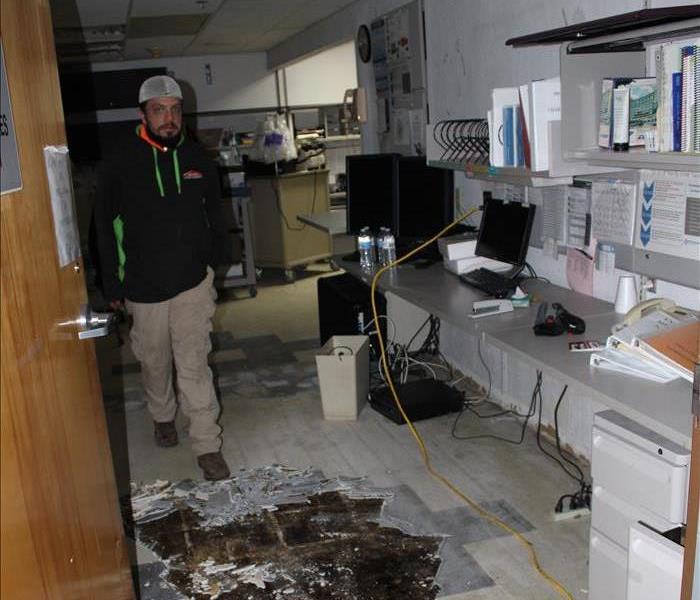 At SERVPRO of Altamonte Springs, we are proud to be leaders in the use of eco-friendly products for fire damage cleanup.
At SERVPRO of Altamonte Springs, we are proud to be leaders in the use of eco-friendly products for fire damage cleanup.
When dealing with fire damage cleanup and restoration, the products and methods used can have a lasting impact on the environment. At SERVPRO of Altamonte Springs, we understand the importance of using eco-friendly products to not only restore your home efficiently but also to minimize environmental harm. In this blog, we'll explore the key benefits of using eco-friendly products in fire damage cleanup, drawing on our expertise to provide valuable insights into why sustainable restoration practices are important.
Reducing Environmental Impact
Traditional cleaning products often contain harsh chemicals that can pollute air, water, and soil when used in large quantities. By opting for eco-friendly solutions during fire damage cleanup, we reduce the release of these harmful substances into the environment. Eco-friendly cleaning agents are typically biodegradable, meaning they break down naturally without leaving harmful residues behind. This is crucial in a fire damage scenario, where extensive cleaning is required, and chemical runoff can become a significant concern.
According to the U.S. Environmental Protection Agency (EPA), pollution from cleaning chemicals contributes to indoor and outdoor environmental issues, including water contamination and air pollution. Choosing safer alternatives helps reduce these environmental risks, making it a responsible choice for homeowners and restoration professionals alike.
Preserving Natural Resources
Eco-friendly products are often made with natural ingredients that require less energy and water to produce compared to synthetic chemicals. This not only conserves resources but also reduces the overall carbon footprint of the restoration process. Using sustainable products in fire damage cleanup demonstrates a commitment to preserving the environment while ensuring a thorough and effective restoration.
Key Benefits of Eco-Friendly Products in Fire Damage Cleanup
- Non-Toxic: Eco-friendly products are free from toxic chemicals, ensuring that they won’t harm the ecosystem when washed away.
- Biodegradable: These products break down naturally, reducing environmental impact.
- Less Packaging Waste: Many eco-friendly brands use minimal or recyclable packaging, further contributing to waste reduction.
- Safe for All Surfaces: Many green cleaning agents are safe to use on a variety of surfaces, reducing the risk of damage to your home during restoration.
Contributing to Long-Term Sustainability
Using eco-friendly products is an investment in the long-term health of the planet. By adopting greener practices, homeowners and restoration experts alike contribute to sustainability efforts that protect ecosystems for future generations. SERVPRO of Altamonte Springs is committed to incorporating eco-friendly options whenever possible in our fire damage restoration services.
A Trusted Partner in Eco-Friendly Restoration
At SERVPRO of Altamonte Springs, we are proud to be leaders in the use of eco-friendly products for fire damage cleanup. By choosing sustainable cleaning solutions, we not only help restore your property but also make a positive impact on the environment. Consider these benefits the next time you need fire damage restoration, and trust our expertise to deliver high-quality, environmentally responsible results.
Safe Mold Cleaning Products for Your Home
11/13/2024 (Permalink)
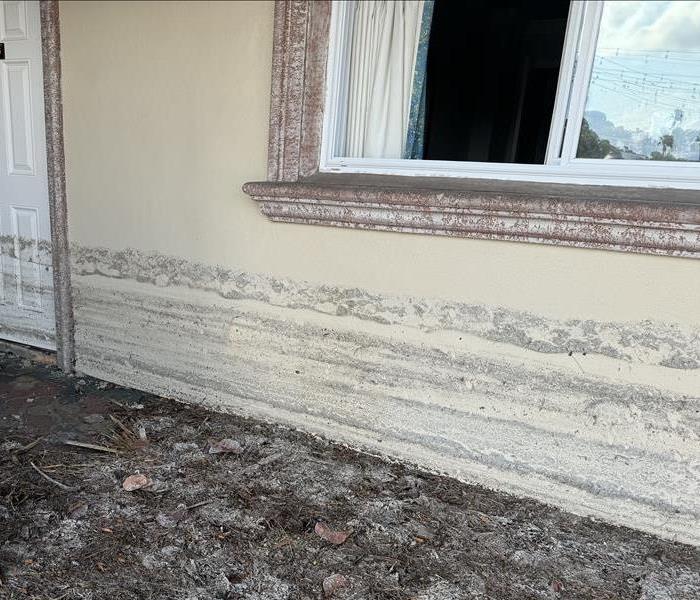 Keeping mold at bay starts with using the right products and maintaining a moisture-free environment.
Keeping mold at bay starts with using the right products and maintaining a moisture-free environment.
Mold can be a persistent problem in homes, especially in humid climates like Altamonte Springs. While professional mold remediation services are often necessary for significant outbreaks, small patches of mold can sometimes be handled with safe and effective DIY methods. Knowing which mold cleaning products to use is crucial to avoid damage to your home and ensure that mold doesn’t return. In this blog, we’ll dive into expert insights on the safest mold cleaning products for your home.
Why Mold Cleaning Products Matter
The U.S. Environmental Protection Agency (EPA) emphasizes that mold can thrive in areas with excess moisture, and it is crucial to address both the mold and the source of the moisture to prevent further growth. The right mold cleaning products will not only clean the mold but also inhibit its return. Here are some safe and effective options for homeowners.
Safe Mold Cleaning Products for DIY Use
- White Vinegar White vinegar is one of the most popular and safest mold cleaning products. It is highly effective against most molds and prevents mold spores from regrowing. To use vinegar, simply spray undiluted white vinegar onto the affected area and let it sit for at least an hour before wiping it off.
- Baking Soda Known for its natural cleaning properties, baking soda is a gentle but effective option for cleaning mold. Mix one teaspoon of baking soda with two cups of water and use this mixture to scrub moldy surfaces. Not only does it clean, but it also absorbs moisture, helping to prevent future mold growth.
- Hydrogen Peroxide Hydrogen peroxide is an excellent mold killer and works well on surfaces like tile and grout. Use a 3% solution, spray it directly on the moldy area, and leave it for about 10 minutes before scrubbing.
- Tea Tree Oil This natural fungicide is highly effective at killing mold. Mix one teaspoon of tea tree oil with one cup of water, spray it on the moldy area, and leave it without rinsing. Its antimicrobial properties also help deter future mold growth.
Mold-Resistant Products to Prevent Future Growth
In addition to these cleaning solutions, it’s helpful to incorporate mold-resistant materials into your home, such as mold-resistant paint or drywall, especially in moisture-prone areas. According to the EPA, using these products significantly reduces the chances of mold taking hold after cleaning.
Keep Your Home Mold-Free
By using safe, effective mold cleaning products like white vinegar and hydrogen peroxide, you can tackle minor mold outbreaks in your home. For larger infestations or stubborn mold, be sure to contact SERVPRO® of Altamonte Springs for expert mold remediation services. Keeping mold at bay starts with using the right products and maintaining a moisture-free environment
Should You Consider Remodeling After Water Damage? Expert Insights for Homeowners
10/16/2024 (Permalink)
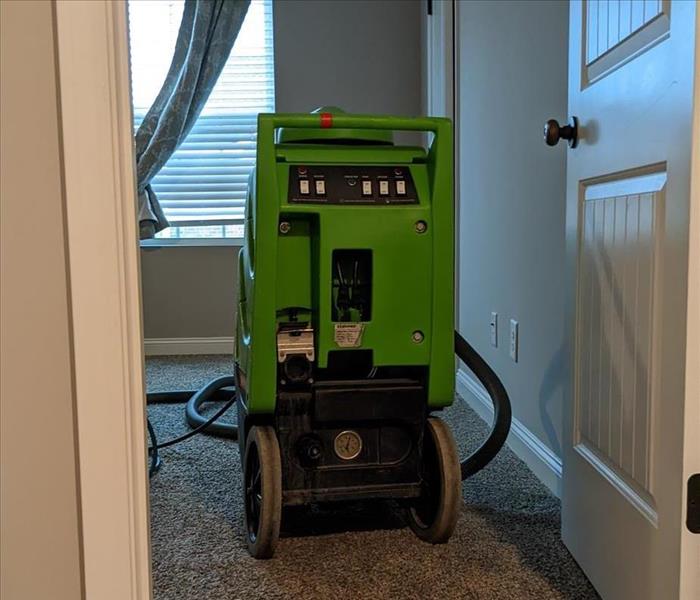 We explore expert insights on what to consider before taking the next step and help you make an informed decision about remodeling.
We explore expert insights on what to consider before taking the next step and help you make an informed decision about remodeling.
Water damage can be one of the most distressing experiences for homeowners, with effects that range from minor inconveniences to significant structural problems. After dealing with the immediate aftermath, many are left wondering: Should I consider remodeling after water damage? In this blog, we’ll explore expert insights on what to consider before taking the next step, and help you make an informed decision about whether remodeling is the right choice for your home.
Understanding the Impact of Water Damage
Before diving into whether remodeling is the right choice, it's essential to understand the full impact of water damage on your home. Water can compromise the structural integrity of your property, damage electrical systems, and ruin materials like drywall, insulation, and flooring. According to the Insurance Information Institute, water damage and freezing issues make up nearly 28 percent of all homeowners' insurance claims in the U.S., making it a common and costly problem for many families source.
Key Considerations Before Remodeling
Remodeling after water damage isn't just about making your home look good again—it's about ensuring your property is safe, functional, and protected against future damage. Here are some crucial factors to consider:
1. Extent of the Damage
- Structural Integrity: Before any remodeling can begin, assess whether the water damage has impacted the structural components of your home, such as the foundation, beams, or load-bearing walls. If these areas have been compromised, immediate attention from a structural engineer or contractor is necessary.
- Hidden Damage: Water often seeps into areas that are not immediately visible, such as behind walls, under flooring, or in the insulation. Ensure that all hidden moisture is properly dried and inspected to prevent future issues like mold growth or rot.
2. Insurance Coverage
- Claim Scope: Review your insurance policy carefully to understand what’s covered and what isn’t. While some policies may cover the cost of repairs, they may not always cover upgrades or complete remodeling efforts. Discuss with your insurance adjuster what your options are before making decisions about remodeling.
- Documentation: Ensure that you’ve documented all the damage thoroughly with photos and detailed notes. This will be vital when communicating with your insurance provider and securing the funds necessary for both repairs and remodeling.
3. Cost vs. Value
- Budgeting: Remodeling can be costly, so it’s crucial to weigh the expenses against the potential value added to your home. Consider the cost of materials, labor, and any upgrades you wish to make. If the damage has led to outdated or damaged finishes, remodeling can not only restore your home but increase its market value.
- ROI (Return on Investment): Certain remodeling efforts, such as upgrading to more water-resistant materials, can have long-term benefits. For example, replacing damaged flooring with water-resistant vinyl or tile could prevent future damage and add resale value.
4. Future Prevention
- Upgrades for Safety: When remodeling, think about incorporating upgrades that will help prevent future water damage. This could include installing sump pumps, enhancing your home’s drainage system, or choosing waterproof materials for vulnerable areas like the basement or bathroom.
- Flood-Proofing: If your area is prone to flooding, consider adding flood-proofing measures such as raised electrical outlets, backflow prevention systems, or even elevating parts of your home. These improvements can save you from future headaches and additional repair costs.
The Benefits of Remodeling After Water Damage
Once you’ve considered the factors above, remodeling after water damage can offer several benefits:
- Restored Aesthetics: Remodeling allows you to update the appearance of your home, possibly improving on the previous design and making it more modern and functional.
- Increased Property Value: A well-done remodel not only repairs damage but can also add value to your home, especially if you choose high-quality materials and finishes.
- Enhanced Durability: By selecting water-resistant or waterproof materials, you can make your home more durable and resistant to future water-related incidents.
Final Thoughts: Is Remodeling Worth It?
Remodeling after water damage can be a significant investment, but it can also provide peace of mind, knowing that your home is safe and restored to its full potential. Before moving forward, make sure you thoroughly assess the damage, review your insurance coverage, and consult with professionals who specialize in water damage restoration and remodeling.
By taking these expert insights into account, you can make a well-informed decision that will not only restore your home but also protect it from future issues.
SERVPRO®'s Emergency Storm Response Team: Ready to Assist in the Southeast
9/11/2024 (Permalink)
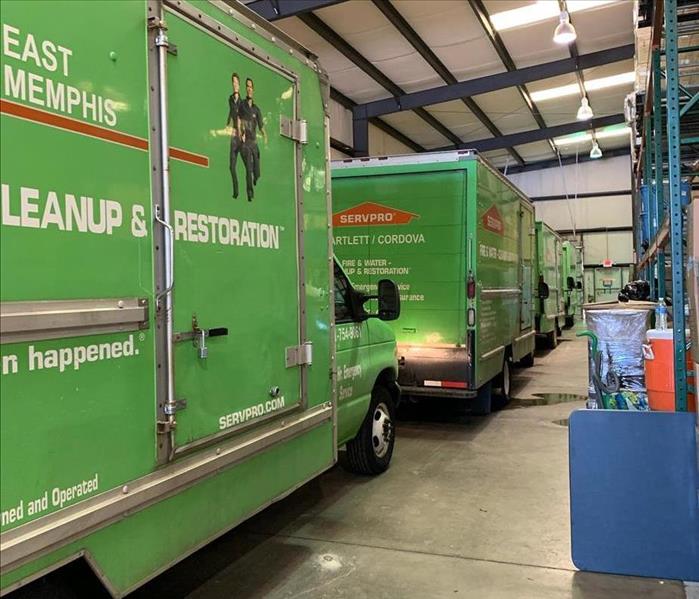 SERVPRO's Emergency Storm Response Team is ready to assist you with expert restoration services and unwavering support.
SERVPRO's Emergency Storm Response Team is ready to assist you with expert restoration services and unwavering support.
When a storm strikes in the Southeast, the aftermath can be overwhelming. From high winds and heavy rains to flooding and structural damage, the impact is often immediate and severe. That's where the SERVPRO® Emergency Storm Response Team comes in. Our team is dedicated to providing rapid, reliable assistance to help you recover from the worst storms. With a focus on efficiency and expertise, we are here to support you in your time of need.
Expertise in Storm Damage Restoration
At SERVPRO, our storm response team is comprised of highly trained professionals with extensive experience in storm damage restoration. We understand the unique challenges that come with storm-related damage, whether it's dealing with water intrusion, fallen trees, or roof damage. Our technicians are equipped with the latest tools and technology to handle any situation, ensuring that your property is restored to its pre-storm condition as quickly as possible.
Comprehensive Storm Services
Our comprehensive range of storm damage services covers everything from initial assessment to complete restoration. We begin with a thorough inspection to identify all areas affected by the storm. This includes checking for hidden damage that may not be immediately apparent. Once the assessment is complete, we develop a detailed plan to address each issue. Our services include water extraction, drying and dehumidification, debris removal, and structural repairs. We also offer temporary protection measures such as tarping and board-up services to prevent further damage while restoration is underway.
Advanced Equipment for Effective Restoration
The effectiveness of storm damage restoration relies heavily on the quality of the equipment used. At SERVPRO, we invest in state-of-the-art equipment to ensure the best possible outcomes for our clients. Our advanced water extraction units, high-powered dehumidifiers, and industrial-strength air movers work together to remove moisture and prevent mold growth. Additionally, our team uses specialized tools to detect hidden moisture and structural issues, allowing us to address problems before they worsen.
Community-Focused Support
SERVPRO is not just a service provider; we are part of the Southeast community. Our team understands the emotional and practical challenges that come with storm damage. We are committed to providing compassionate, professional support to help you navigate the recovery process. From assisting with insurance claims to offering guidance on the best restoration practices, we are here to make the process as smooth as possible.
Preparedness and Proactive Measures
While we are always ready to respond to storm damage, we also believe in the importance of preparedness. SERVPRO offers resources and advice to help you prepare for future storms. This includes tips on creating an emergency plan, securing your property, and identifying potential hazards. By taking proactive measures, you can minimize the impact of storms and protect your home or business.
Contact SERVPRO for Storm Damage Assistance
When a storm hits, you need a trusted partner to help you recover. SERVPRO's Emergency Storm Response Team is ready to assist you with expert restoration services and unwavering support. Contact us today to learn more about our storm damage services and how we can help you get back on your feet after a storm. With SERVPRO, you can rest assured that your property is in good hands.
The leading causes of home fires
8/14/2024 (Permalink)
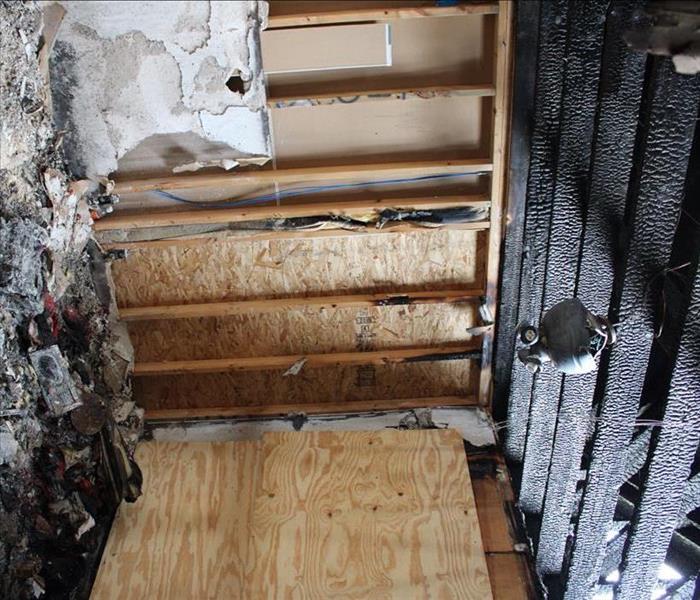 If you ever experience a fire, our team is ready to assist with fire damage restoration.
If you ever experience a fire, our team is ready to assist with fire damage restoration.
As a SERVPRO® team member, I’ve witnessed firsthand the devastating effects home fires can have on families and their properties. Understanding the leading causes of home fires is essential for prevention and ensuring the safety of your loved ones. In this blog post, we’ll explore the primary causes of home fires and offer tips on how to prevent them.
Cooking Fires
Cooking is the leading cause of home fires. According to the National Fire Protection Association (NFPA), unattended cooking is the main culprit. Whether you're frying, grilling, or baking, it's crucial to stay in the kitchen while preparing food. Here are some tips to prevent cooking fires:
- Never leave cooking unattended: If you need to leave the kitchen, turn off the stove.
- Keep flammable objects away from the stove: Items like oven mitts, paper towels, and wooden utensils can easily catch fire.
- Install a smoke alarm in the kitchen area: Ensure it's functioning correctly and test it monthly.
Heating Equipment
Heating equipment is another major cause of home fires, particularly during the colder months. Space heaters, fireplaces, and wood stoves can be fire hazards if not used properly. Here’s how to reduce the risk:
- Keep space heaters at least three feet away from anything flammable: This includes furniture, curtains, and bedding.
- Never leave heating equipment unattended: Turn off space heaters and extinguish fireplaces before leaving the room or going to bed.
- Regularly clean and inspect heating equipment: Ensure chimneys and vents are free from debris and creosote buildup.
Electrical Fires
Electrical fires are often caused by faulty wiring, overloaded circuits, and the improper use of extension cords. Here’s what you can do to prevent them:
- Inspect your home's electrical system regularly: Look for signs of wear and tear, such as frayed wires or scorch marks around outlets.
- Avoid overloading circuits: Plugging too many devices into one outlet can cause overheating.
- Use extension cords wisely: Do not use them as a permanent solution and avoid running them under carpets or through doorways.
Smoking
Smoking materials are a significant cause of fatal home fires. Most smoking-related fires start in bedrooms or living rooms when cigarettes are not properly extinguished. To prevent smoking-related fires:
- Smoke outside: If possible, smoke outside the home to reduce the risk.
Use deep, sturdy ashtrays: Ensure they are placed on a stable surface and away from flammable items.
- Never smoke in bed: This is especially important if you’re feeling drowsy or have consumed alcohol.
Candles
Candles can create a cozy atmosphere, but they also pose a fire risk if not used safely. Follow these tips to enjoy candles safely:
- Keep candles away from flammable items: Ensure they are placed on a sturdy, heat-resistant surface.
- Never leave candles unattended: Always extinguish them before leaving the room or going to bed.
- Consider flameless candles: Battery-operated candles provide the same ambiance without the fire risk.
By being aware of the leading causes of home fires and taking proactive steps to prevent them, you can protect your home and loved ones. At SERVPRO, we’re committed to helping you maintain a safe living environment. If you ever experience a fire, our team is ready to assist with fire damage restoration, ensuring your home is restored to its pre-fire condition. Stay safe and vigilant!
For more tips and information, feel free to visit our blog regularly. Your safety is our priority!
Mold in Rental Properties: Tenant and Landlord Responsibilities
7/17/2024 (Permalink)
Mold in rental properties is a concern that both tenants and landlords need to address promptly to maintain a safe and comfortable living environment. Understanding the responsibilities of each party can help in preventing mold growth and ensuring timely remediation when it does occur. In this blog post, we will outline the key responsibilities of both tenants and landlords regarding mold in rental properties.
Tenant Responsibilities
Reporting Mold Issues Promptly
As a tenant, your first responsibility is to report any signs of mold to your landlord or property manager immediately. Early detection and communication are crucial in preventing the spread of mold. Look for common signs such as discoloration on walls, ceilings, or floors, and a musty odor.
Maintaining Cleanliness and Ventilation
Tenants play a vital role in preventing mold growth by maintaining cleanliness and proper ventilation in their living spaces. Regular cleaning, especially in moisture-prone areas like bathrooms and kitchens, can help prevent mold. Ensure that exhaust fans are used during and after showering and cooking to reduce humidity levels. Additionally, avoid blocking air vents and keep windows open when weather permits to promote air circulation.
Addressing Minor Leaks and Moisture
If you notice any minor leaks or condensation, it’s important to address them immediately. Wipe down any moisture and notify your landlord if repairs are needed. Simple actions like using a dehumidifier and ensuring that water doesn’t accumulate in basements or other damp areas can also be effective in controlling moisture levels.
Landlord Responsibilities
Conducting Regular Inspections
Landlords are responsible for conducting regular inspections of their rental properties to identify potential mold issues. These inspections should include checking for water leaks, condensation, and adequate ventilation systems. Regular maintenance can prevent minor issues from escalating into significant mold problems.
Repairing Leaks and Water Damage
Promptly repairing any leaks or water damage is one of the most critical responsibilities of a landlord. This includes fixing leaky roofs, plumbing issues, and any other sources of water intrusion. Addressing these problems quickly can prevent mold from developing and spreading throughout the property.
Providing Adequate Ventilation and Dehumidification
Landlords should ensure that their rental properties have adequate ventilation systems in place, including functioning exhaust fans in bathrooms and kitchens. In areas with high humidity levels, providing dehumidifiers can help control moisture and reduce the risk of mold growth.
Educating Tenants
Educating tenants about mold prevention and their responsibilities is another important task for landlords. Providing tenants with information on how to prevent mold, recognize its early signs, and the importance of reporting issues promptly can foster a collaborative approach to mold prevention and control.
Working Together
Effective communication between tenants and landlords is essential in managing mold in rental properties. Tenants should feel comfortable reporting mold issues without fear of retaliation, and landlords should respond to these reports promptly and professionally. By working together, both parties can maintain a mold-free living environment and ensure the property remains in good condition.
At SERVPRO®, we understand the importance of addressing mold issues promptly and effectively. Our team of experts is here to assist with mold inspection, remediation, and prevention strategies to keep your rental property safe and comfortable. If you need professional help, don’t hesitate to contact us.
By following these guidelines, tenants and landlords can work together to prevent and address mold issues, ensuring a healthy living environment for all.
Steps to Prepare for a Water Emergency
6/11/2024 (Permalink)
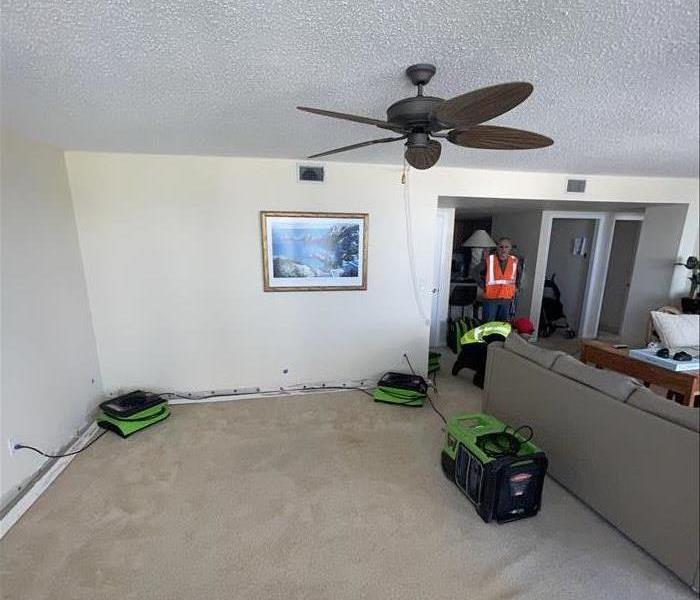 By following these steps and being prepared, you can help minimize the impact of a water emergency on your home and belongings.
By following these steps and being prepared, you can help minimize the impact of a water emergency on your home and belongings.
Water emergencies can strike unexpectedly and cause significant damage to your property if you're not adequately prepared. Whether it's a burst pipe, flooding, or a plumbing malfunction, being proactive and prepared can help minimize damage and protect your home and belongings. In this guide, we'll outline essential steps to help you prepare for a water emergency and mitigate potential damage.
Know Your Home
Familiarize yourself with the layout and key components of your home's plumbing system. Locate the main shut-off valve for the water supply and learn how to turn it off in case of an emergency. Understanding your home's plumbing system will help you act quickly and decisively during a water emergency.
Inspect and Maintain Your Plumbing
Regular maintenance of your plumbing system can help prevent water emergencies. Inspect pipes, faucets, and appliances for signs of leaks, corrosion, or damage. Repair any issues promptly to prevent them from escalating into more significant problems. Consider scheduling annual plumbing inspections to catch potential issues early.
Assemble an Emergency Kit
Put together an emergency kit that includes essential supplies and tools to help you respond to a water emergency. Items to include in your kit may vary but could consist of flashlights, batteries, a first aid kit, non-perishable food, water, blankets, and a portable radio. Keep your emergency kit in a readily accessible location.
Invest in Water Detection Devices
Consider investing in water detection devices, such as water leak sensors and alarms, to alert you to potential leaks or flooding. These devices can provide early warning of water-related issues, allowing you to take swift action and prevent extensive damage. Place water detection devices in areas prone to water damage, such as basements, crawl spaces, and near appliances.
Secure Valuables and Important Documents
Take steps to protect valuable items and important documents from water damage. Store valuables in waterproof containers or elevated areas to minimize the risk of water exposure. Make digital copies of essential documents, such as insurance policies, identification, and medical records, and store them in a secure, cloud-based location.
Review Your Insurance Coverage
Review your homeowner's insurance policy to understand what types of water damage are covered and what may be excluded. Consider purchasing additional coverage or endorsements for specific water-related risks, such as flood insurance or sewer backup coverage. Keep a copy of your insurance policy and contact information for your insurance provider in your emergency kit.
Stay Informed
Stay informed about potential water-related risks in your area, such as severe weather forecasts, flooding, or plumbing issues. Monitor local news and weather reports for updates and advisories. Being aware of potential risks can help you take proactive measures to protect your home and family.
By following these steps and being prepared, you can help minimize the impact of a water emergency on your home and belongings. Taking proactive measures and having a plan in place will give you peace of mind and ensure that you're ready to respond effectively in case of a water-related crisis.
Steps to Take Before a Tropical Storm or Hurricane Hits
5/15/2024 (Permalink)
 For professional assistance with storm damage restoration, contact our team at SERVPRO for prompt and reliable service!
For professional assistance with storm damage restoration, contact our team at SERVPRO for prompt and reliable service!
As hurricane season approaches, it's crucial to prepare your home and family for potential storms. By taking proactive measures and planning ahead, you can minimize the impact of a tropical storm or hurricane and ensure the safety of your loved ones. In this blog, we'll discuss important steps to take before the storm arrives, helping you to stay informed, organized, and prepared for any emergency.
1. Stay Informed
Monitor weather forecasts and updates from reliable sources, such as the National Hurricane Center or local emergency management agencies. Pay attention to storm tracks, projected intensity, and evacuation orders in your area. Stay informed about potential hazards, evacuation routes, and emergency shelters available in your community.
2. Prepare an Emergency Kit
Gather essential supplies and create an emergency kit that includes non-perishable food, water, medications, first-aid supplies, flashlights, batteries, a battery-powered radio, and important documents. Stock up on supplies for at least three days to ensure you have enough provisions in case of power outages or restricted access to stores.
3. Secure Your Home
Inspect your property for potential hazards and secure loose items that could become projectiles in high winds, such as patio furniture, outdoor décor, and potted plants. Trim trees and branches near your home and remove dead or diseased limbs that could pose a risk during the storm. Reinforce windows and doors with storm shutters or plywood to protect against flying debris.
4. Evacuation Planning
Know your evacuation zone and have a plan in place for relocating to a safe location if necessary. Determine evacuation routes and designate a meeting point for your family members in case you get separated. Make arrangements for pets and livestock, and consider the needs of elderly or disabled individuals who may require special assistance during evacuation.
5. Backup Power and Utilities
Invest in a portable generator or backup power source to maintain essential appliances and equipment during power outages. Test your generator in advance and ensure it is properly fueled and functioning. Turn off utilities, such as gas, water, and electricity, before the storm to prevent damage and reduce the risk of fire or electrocution.
6. Communication Plan
Establish a communication plan with family members, friends, and neighbors to stay connected during the storm. Exchange contact information and designate an out-of-state contact person as a central point of communication. Use text messages, social media, or a designated group chat to stay in touch and provide updates on your status.
By following these pre-storm preparations, you can enhance your readiness and resilience in the face of a tropical storm or hurricane. From staying informed and assembling an emergency kit to securing your home and planning for evacuation, taking proactive steps before the storm hits can help mitigate risks and protect your property and loved ones. For professional assistance with storm damage restoration and cleanup, contact our team at SERVPRO of Altamonte Springs/Longwood for prompt and reliable service. Stay safe and be prepared!
The Threat of Wildfires in Florida
4/11/2024 (Permalink)
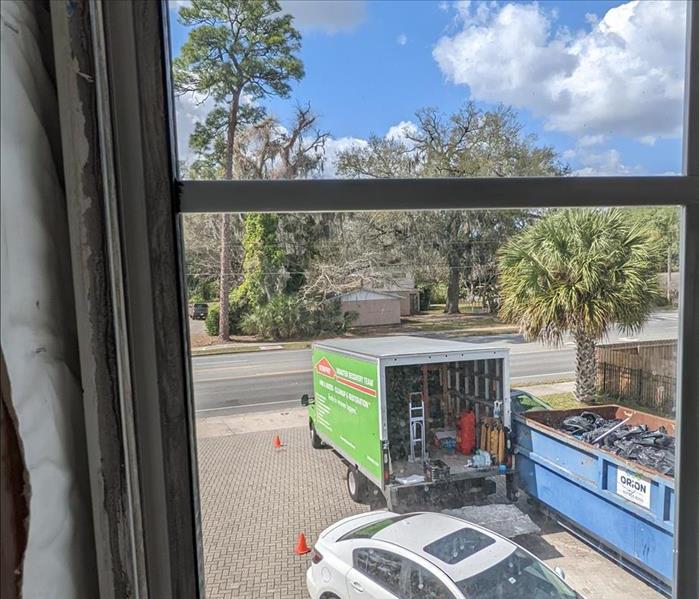 Don't wait until it's too late—start implementing these wildfire preparedness measures today to protect your home and loved ones.
Don't wait until it's too late—start implementing these wildfire preparedness measures today to protect your home and loved ones.
As a homeowner in Florida, it's important to recognize the potential dangers posed by wildfires and take proactive steps to protect your property. While Florida may be known for its beautiful landscapes and sunny weather, it's also susceptible to wildfires, especially during dry and windy conditions. In this blog post, we'll explore the risks associated with wildfires in Florida and provide practical tips on how to prepare and protect your home from this ever-present threat.
Understanding the Threat
Wildfires in Florida can occur throughout the year, but they are most prevalent during the dry season, typically from late fall through spring. Factors such as drought, high winds, and human activity can contribute to the spread of wildfires, posing a significant risk to homes and communities across the state.
Assessing Your Home's Vulnerability
Start by assessing your home's vulnerability to wildfires. Consider factors such as the proximity of dense vegetation or wooded areas, the presence of flammable materials near the home, and the condition of the roof and exterior walls. Identifying potential vulnerabilities will help you develop a comprehensive wildfire preparedness plan.
Creating Defensible Space
Create defensible space around your home by clearing vegetation and debris from the immediate vicinity. Trim trees and shrubs to create a buffer zone of at least 30 feet around structures, and keep grasses and other flammable vegetation well-maintained and watered.
Hardening Your Home
Harden your home against wildfire by using fire-resistant building materials and making necessary upgrades to the roof, windows, and exterior walls. Consider installing ember-resistant vents and enclosing eaves and soffits to prevent embers from entering the home.
Preparing an Evacuation Plan
Develop an evacuation plan for your family and pets in the event of a wildfire. Identify multiple evacuation routes and establish a designated meeting point outside the evacuation zone. Keep emergency supplies such as food, water, medications, and important documents readily accessible.
Stay Informed
Stay informed about wildfire activity in your area by monitoring local news and official updates from emergency management agencies. Sign up for emergency alerts and notifications to receive timely information about evacuation orders, road closures, and other important updates.
Maintaining Fire Safety Practices
Practice fire safety year-round by observing local regulations regarding outdoor burning, using caution when operating grills or fire pits, and properly disposing of cigarette butts and other flammable materials. Encourage neighbors to do the same to reduce the risk of accidental fires.
Seek Professional Assistance
In the unfortunate event that your home sustains fire damage, it's essential to seek professional assistance for thorough cleanup and restoration. SERVPRO® specializes in fire damage restoration, offering comprehensive services to help homeowners recover from the aftermath of a fire. Let our team handle the restoration process, allowing you to focus on rebuilding and restoring your life after a fire.
By taking proactive steps to prepare and protect your home from wildfires, you can minimize the risk of damage and increase the safety and resilience of your property. Don't wait until it's too late—start implementing these wildfire preparedness measures today to protect your home and loved ones.
Laborer to Production Operations Manager - Celebrating Success, Mentorship, and Team Spirit at SERVPRO® of Altamonte Springs / Longwood
12/6/2023 (Permalink)
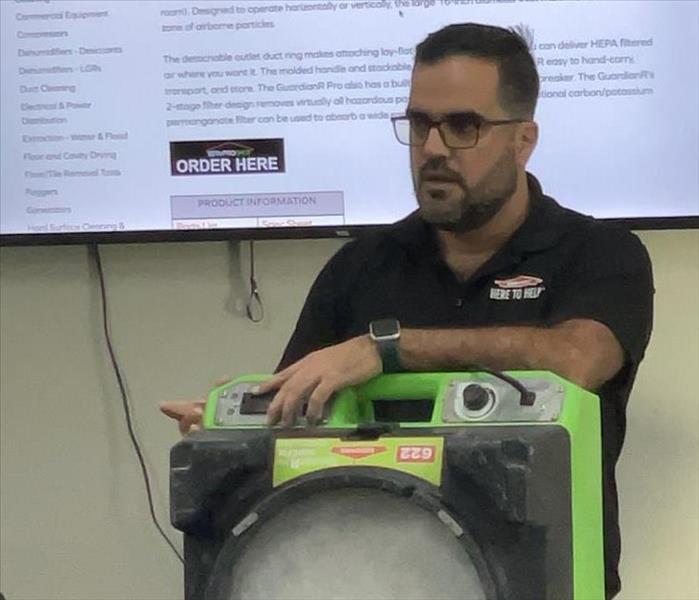 Heydrich Kattar Hernandez training his team
Heydrich Kattar Hernandez training his team
In his 2 short years with SERVPRO® Team Nicholson, representing our Orlando location, Heydrich Kattar Hernández has proved endless in zeal, integrity, and a desire for personal and professional development. As we celebrate having Heydrich on board, we not only commemorate his individual successes but also the mentorship and inspiration he offers to our entire team.
In November 2021, Heydrich started with us as a laborer, bringing enthusiasm and an eagerness to learn. His tenure has been marked by significant, quick growth, shaped by his willingness to serve in a variety of roles. He says the diverse experiences—from working on various residential and commercial jobs to the challenges of long hours and extensive travel—have enriched his professional journey.
Now serving as Production Operations Manager within our Training Division, Heydrich continues offering a high standard of service as he uses his passion for making a meaningful impact on our customers’ and employees’ lives. He says, "I've had the privilege of meeting people from all walks of life and contributing to helping others in their homes."
Heydrich embodies the SERVPRO Team Nicholson culture that values knowledge-sharing, encouragement, and opportunity. He says,
“I am sincerely thankful for the belief placed in me, the opportunities to share knowledge, and the continuous support from colleagues who have been mentors and guides. Special appreciation goes to those who have dedicated time to teach, coach, or offer support.“
Heydrich's journey with SERVPRO of Altamonte Springs / Longwood and SERVPRO Team Nicholson not only marks a personal achievement, but serves as a testament to the power of teamwork and constancy.
Today, Heydrich is excited about the future as he focuses on scouting for talent that aligns with our core values, and continues to help our team grow and improve. Cheers to Heydrich!
Follow the story on our LinkedIn.



 24/7 Emergency Service
24/7 Emergency Service





